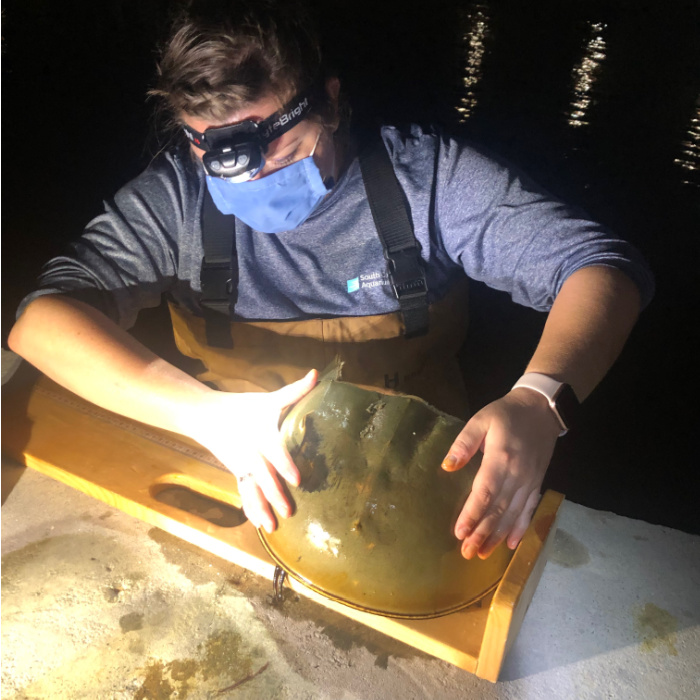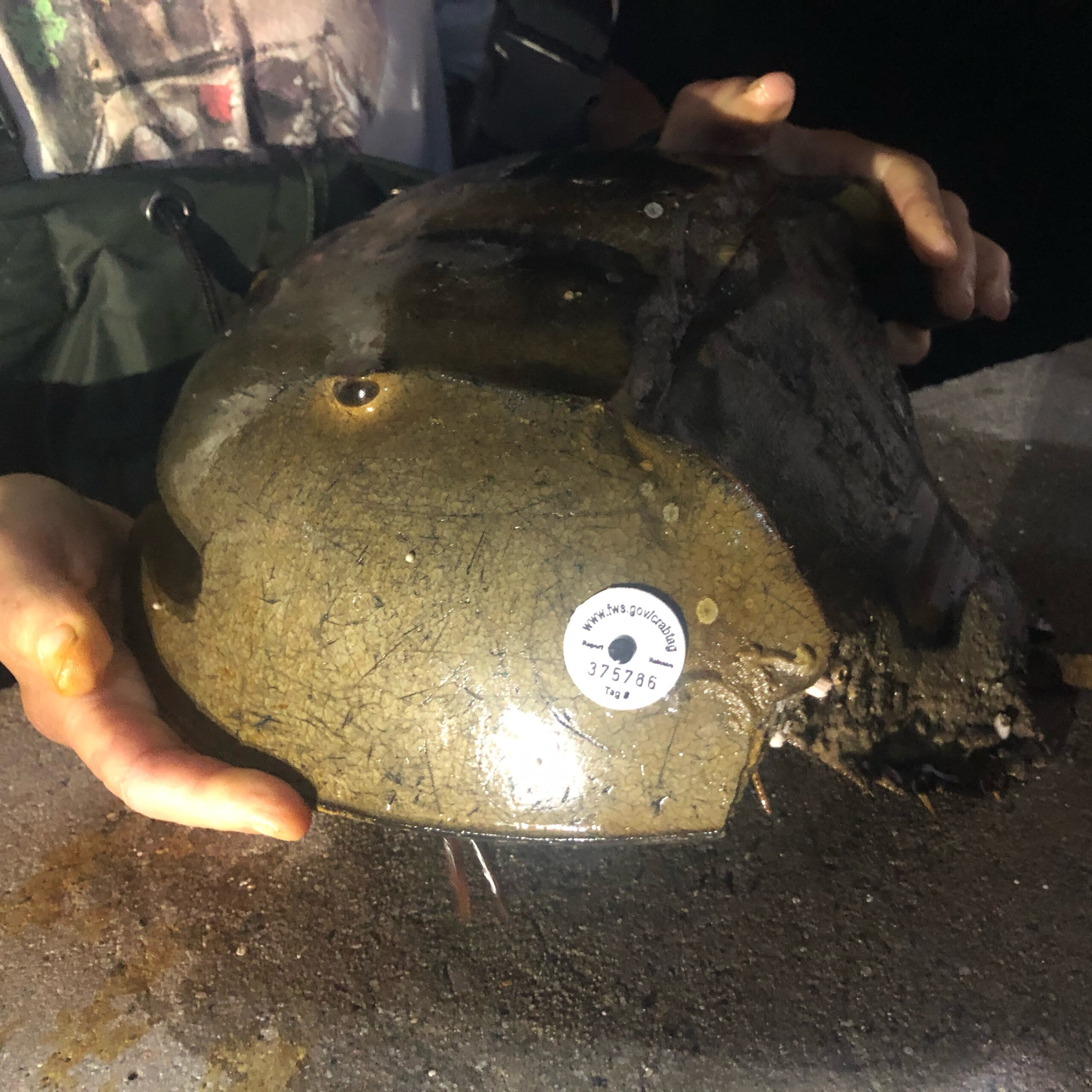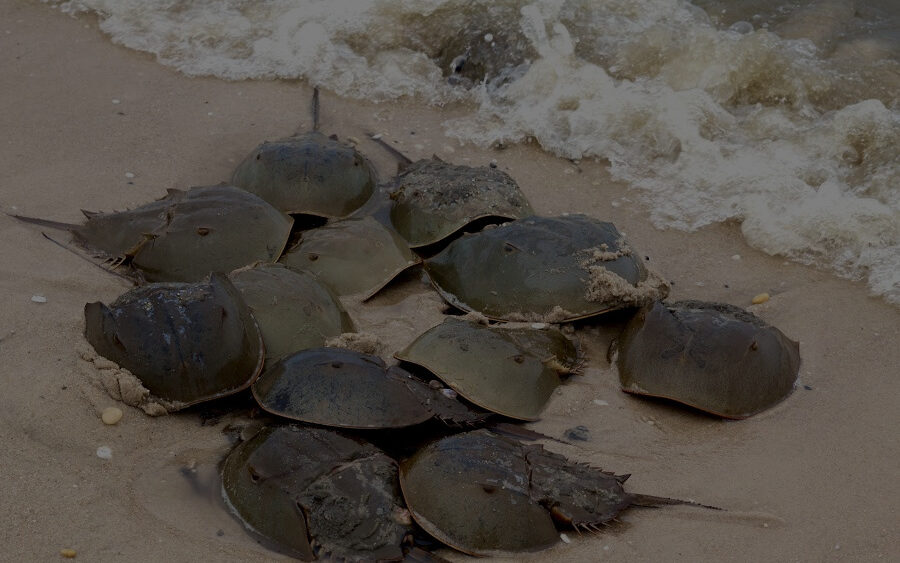Donning waders and headlamps, Aquarium staff trudge into the murky waters adjacent to the Aquarium, guided by the full moonlight mirrored on the water. We are seeking out a very particular creature known to arrive in droves along the coast during the early spring.
Through the ripples, an armored being appears below, with others emerging in view nearby. Resembling a rusty helmet wielding a sword-like tail, horseshoe crabs may seem menacing at first glance. History tells us of their tenacious nature, having remained virtually unchanged for more than 450 million years. Despite their misleading name, these living fossils are more closely related to scorpions and spiders, a fact made obvious when you get a glimpse of their underside. Five pairs of legs covered in bristles enable horseshoe crabs to move, eat and mate.
It’s their annual mating behavior that brings us in the company of these alien-like creatures this evening. Each spring, horseshoe crabs come ashore to nest along the coast. The Aquarium is flanked by two shorelines, areas that have ample sightlines for these annual spawning events. For roughly eighteen nights (during the full and new moon phases), we wait for nightfall in the hopes of finding horseshoe crabs and helping the South Carolina Department of Natural Resources (SCDNR) study them.
It’s a gamble each night we’re out in the water, with no guarantee we’ll be graced with their presence. If and when they do arrive, we calmly spring into action, collecting data meticulously and carefully. We spend time observing their spawning behavior, determining the sex of each visible crab, identifying any previously tagged horseshoe crabs and finish by measuring and tagging a select number of individuals. These tags are produced by the United States Fish and Wildlife Service (USFWS), and are issued to us via SCDNR. Data collected on the beaches, coupled with ongoing trawl surveys, aid SCDNR with horseshoe crab population monitoring, fisheries management and responsible harvesting practices.

Once our assessment is complete, tagged horseshoe crabs return to the water and disappear into the depths below, continuing on as living fossils — an invaluable link to the prehistoric past.

Have you come across horseshoe crabs spawning? SCDNR would love to know! Here’s what to do:
- Take a photo of the horseshoe crabs
- Note the date, time, location and general number of crabs you see (Bonus points if you can spot any with tags!)
- Import your findings at surveymonkey.com/r/Horseshoecrab


